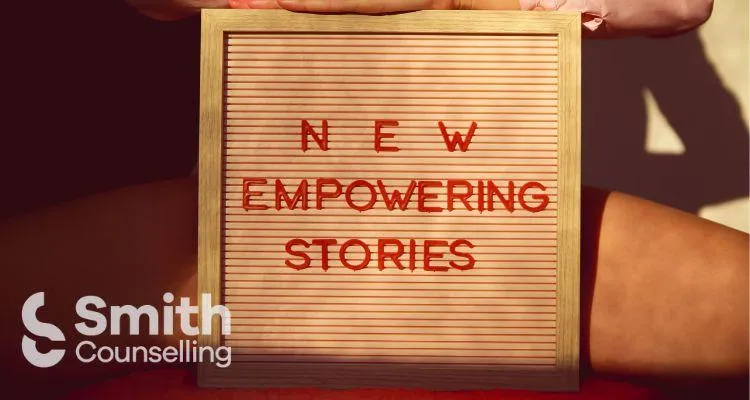
The Power of Storytelling in Professional Presentations
How narratives captivate, connect, and convert
Have you ever sat through a presentation that felt like an endless stream of bullet points and data, leaving you checking your watch every few minutes? Then compare that experience to a speaker who opened with a captivating story that had you leaning forward in your seat, completely absorbed.
This stark difference illustrates why storytelling stands as the most powerful tool in your speaking arsenal.
As you develop your professional speaking abilities, embracing narrative techniques transforms ordinary information into extraordinary experiences for your audience. When you master storytelling in your presentations, you create memorable moments that resonate long after your final slide.

Why Stories Work Where Data Alone Falls Short
Your brain responds differently to stories than to pure information. When you hear factual data, your analytical Broca's and Wernicke's areas activate. But when you engage with stories, something remarkable happens—your entire brain lights up as if you're experiencing the events firsthand.
This neurological response explains why audience members remember stories up to 22 times more effectively than standalone facts.
Consider how you process information in your daily life. Which stays with you longer—a statistic about customer satisfaction or a compelling case study about someone who overcame challenges using your solution?
Question for reflection: What personal story could you incorporate into your next presentation that perfectly illustrates your central message?

The Three Pillars of Storytelling Mastery in Professional Settings
Emotional Connection
When you weave emotion into your narratives, you create pathways for authentic connection. Your audience develops trust when they sense genuine feeling behind your words.
The most effective presentation stories tap into universal emotions—triumph over adversity, moments of discovery, or profound realisation—elements that transcend industry boundaries and speak to our shared humanity.
A powerful technique involves taking your audience on an emotional journey alongside your protagonist. When crafting your signature speech, consciously map the emotional arc you want your listeners to experience.
Relevance and Relatability
Stories that resonate with your audience's lived experience create immediate engagement. When listeners recognise themselves or their challenges in your narrative, they mentally lean in.
Master communicators understand their audience deeply enough to select stories that mirror their concerns, aspirations, and experiences. This alignment transforms listeners from passive recipients into active participants in your message.
Consider your audience's current reality. What stories would validate their experiences while simultaneously opening new possibilities for them?
Clear Purpose and Message
Every story within your presentation serves a strategic purpose. Effective speakers understand exactly why each narrative appears and what response it aims to generate.
Does your opening story establish credibility? Does another narrative illustrate a complex concept? Perhaps your closing story inspires specific action?
When each story aligns with your communication strategy, your presentation moves from entertaining to transformative.
Question for reflection: For each key point in your next presentation, what purposeful story could bring that message to life?

The Five Story Types Every Professional Speaker Masters
The Origin Story
Your personal journey contains powerful elements that build authority and relatability simultaneously. Sharing your "why"—the driving purpose behind your work—creates authentic connection.
Origin stories work because they humanise you while establishing expertise. They answer the question your audience unconsciously asks: "Why should I listen to you?"
The most effective origin stories highlight vulnerability alongside triumph, showing transformation rather than simply showcasing accomplishments.
The Client Transformation Story
Hearing how others achieved results through your approach creates powerful social proof. When you share client success stories structured as journeys rather than testimonials, your audience mentally places themselves in the protagonist's shoes.
Effective client stories follow a clear structure:
The initial situation and challenge
The turning point or discovery
The implementation journey
The meaningful results
The lasting transformation
Question for reflection: Which client transformation story best demonstrates the value you deliver while connecting emotionally with your ideal audience?
The Metaphor Story
Complex concepts become remarkably accessible through well chosen metaphors. When you compare an abstract idea to something tangible and familiar, comprehension accelerates dramatically.
Your industry expertise likely includes concepts your audience struggles to grasp fully. Identifying metaphors that bridge this understanding gap creates those valuable "aha" moments that position you as an exceptional communicator.
When crafting metaphor stories, select comparisons relevant to your audience's everyday experience, making the unfamiliar instantly recognisable.
The Contrasting Worlds Story
These narratives paint two distinct pictures—the current reality versus the possible future. They create tension between what is and what could be, motivating your audience toward change.
Effective contrasting worlds stories avoid creating artificial problems. Instead, they acknowledge real challenges while illuminating genuine possibilities your audience might not fully recognise.
When developing these narratives, emphasise the emotional experience of both worlds, not just their practical differences.
The Mirroring Story
Perhaps the most powerful technique involves telling stories where your audience sees themselves so clearly that they feel personally understood.
These narratives demonstrate your deep comprehension of their challenges, aspirations, and unspoken concerns. When listeners feel truly seen, their openness to your message increases exponentially.
To create effective mirroring stories, you must develop genuine audience empathy. What keeps them awake at night? What do they secretly wish for but rarely express? When your story reflects these realities, connection deepens instantly.
Question for reflection: Which storytelling approach resonates most powerfully with your communication style? How might you leverage this strength while developing your other storytelling capabilities?

Crafting Your Signature Storytelling Framework
As you develop your signature speech, creating a consistent storytelling framework provides structure without sacrificing authenticity. Your framework serves as your reliable foundation while allowing flexibility for different audiences and contexts.
Know Your Core Stories
Identify 3-5 signature stories that consistently resonate with your audiences. These become cornerstones of your speaking repertoire, refined through repetition while maintaining their emotional authenticity.
Your core stories should span different purposes—establishing credibility, illustrating concepts, inspiring action—giving you versatile tools for various speaking situations.
Master Story Structure
While numerous storytelling structures exist, the classic Hero's Journey framework adapts beautifully to professional contexts. This approach positions your audience as the hero facing challenges, with your insights serving as the guide that helps them achieve transformation.
This structure works because it mirrors how humans naturally process narrative. By positioning your audience as the protagonist rather than yourself, you create an experience where they envision their own success through your guidance.
Develop Seamless Transitions
The art of moving between story and content determines presentation flow. Skilled speakers create bridges that connect narrative moments to key teaching points, making these transitions feel natural rather than forced.
Effective transitions often include reflection questions that help audience members apply the story's lesson to their own situation, deepening engagement through personal relevance.
Question for reflection: What transition phrases could help you move smoothly between your stories and your core content?

Practical Applications for Different Speaking Contexts
For Business Presentations
When presenting business information, strategic storytelling transforms data from abstract to meaningful. Opening with a relevant customer story before revealing supporting statistics creates context that makes numbers memorable.
For executive audiences, concise stories that illuminate market trends or strategic implications prove particularly effective. These narratives provide the "so what" factor that moves information from interesting to actionable.
For Training Environments
Learning retention increases dramatically when concepts connect to narrative examples. When you structure training around story frameworks, participants engage both emotionally and intellectually.
Effective training stories include specific application moments—"Here's how you might use this approach when facing..."—that bridge theory and practice.
For Sales Presentations
The difference between presenting features and telling transformation stories often determines sales success. When potential clients see themselves in your narrative, the selling process shifts from persuasion to confirmation.
Structure sales stories to address specific objections through narrative rather than direct countering. This approach feels collaborative rather than combative.
Question for reflection: For your next high stakes presentation, what story could create the perfect emotional foundation for your key message?

Developing Your Storytelling Mastery: Practical Next Steps
Record and Review Your Stories
The storytelling elements that feel most impactful while speaking sometimes differ from what actually resonates with listeners. Recording your practice sessions reveals valuable insights about pacing, emphasis, and emotional delivery.
Listen specifically for moments where your energy naturally rises—these often indicate your authentic connection points that deserve amplification.
Seek Specific Feedback
Rather than asking generally about your stories, request feedback on particular elements: "Did the opening create curiosity?" "Was the challenge clear enough?" "Did you feel emotional connection during the resolution?"
Targeted questions yield actionable insights that general feedback rarely provides.
Join a Speaking Community
Surrounding yourself with other communicators accelerates growth through both observation and feedback. Speaking communities offer safe environments to test and refine your narrative approaches.
These environments also expose you to diverse storytelling styles, expanding your repertoire beyond your natural tendencies.

The Path Forward: Your Storytelling Evolution
As you integrate storytelling into your professional presentations, recognise that this represents an ongoing journey rather than a destination. Master communicators continuously refine their narrative approach, adapting to new audiences and contexts.
The most powerful presenters maintain story banks—collections of narratives categorised by purpose, length, and emotional tone—giving them versatile options for any speaking situation.
Your storytelling evolution follows a natural progression:
Beginning with personal stories that establish authenticity
Adding client narratives that demonstrate results
Developing metaphor stories that simplify complexity
Creating contrasting worlds stories that motivate change
Mastering mirroring stories that create profound connection
Each stage builds upon the previous, expanding your communication impact.
Question for reflection: Where do you currently feel most confident in your storytelling, and which area represents your growth edge?

Your Invitation to Deeper Exploration
As you consider how storytelling might transform your professional presentations, we invite you to explore our signature resource "Reignite Your Life's Inspiration"—a comprehensive guide that includes specific storytelling frameworks alongside practical application exercises.
This resource provides structured approaches to discovering your most powerful stories and integrating them seamlessly into your professional communication.
Your next presentation represents an opportunity to move beyond information delivery into true audience transformation. When you master the art of narrative engagement, you create experiences rather than merely delivering content.
What story will you tell today?
For personalised guidance on developing your signature speaking style, including advanced storytelling techniques for professional contexts, explore our presentation skills training and speaking confidence programs at Smith Counselling.




